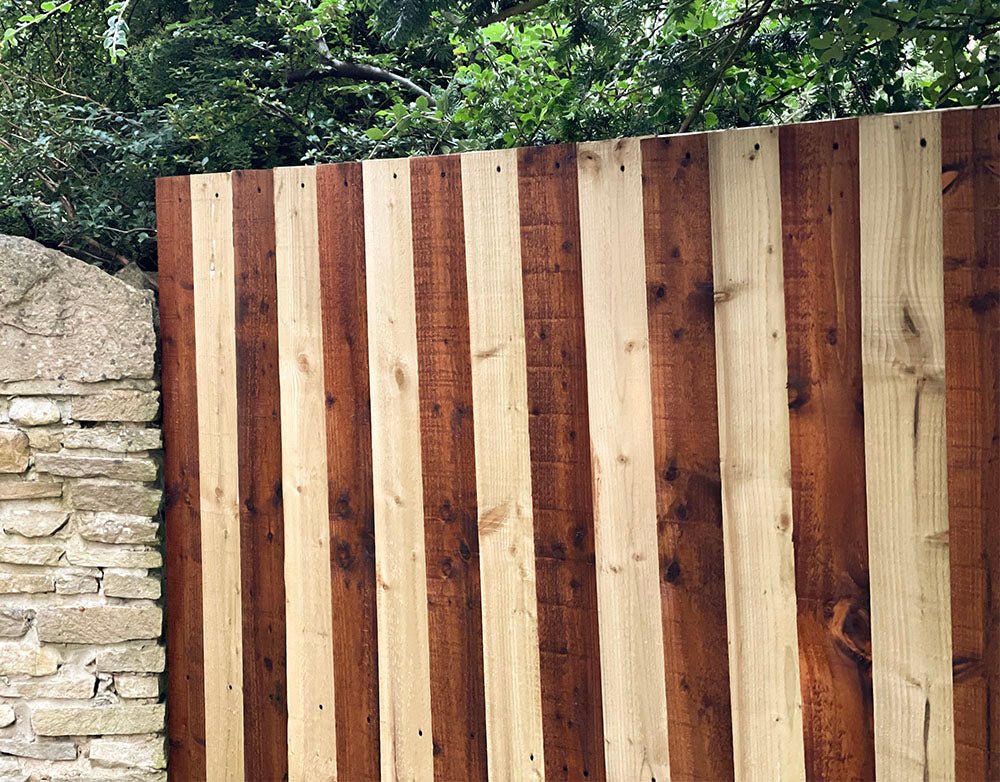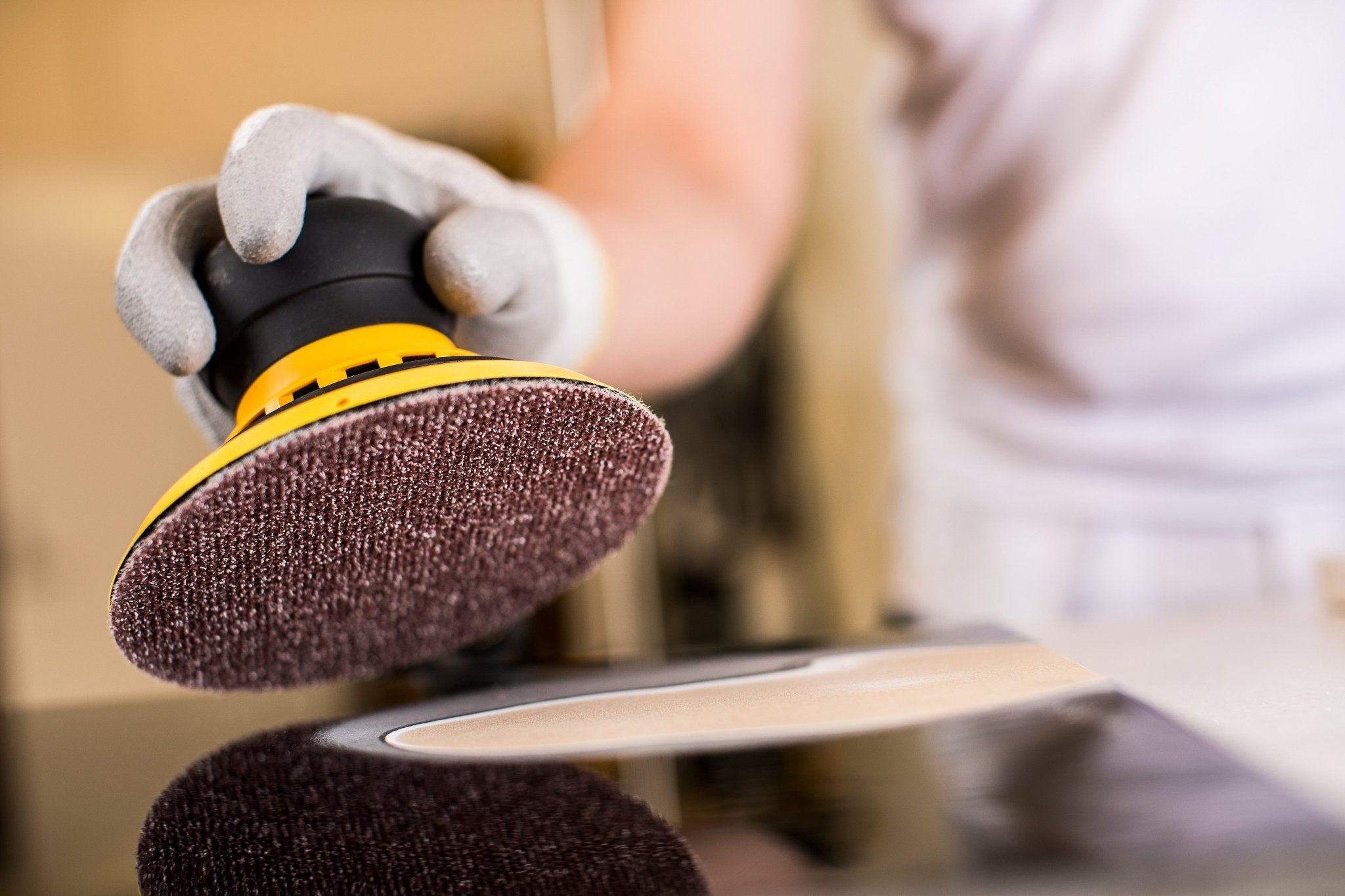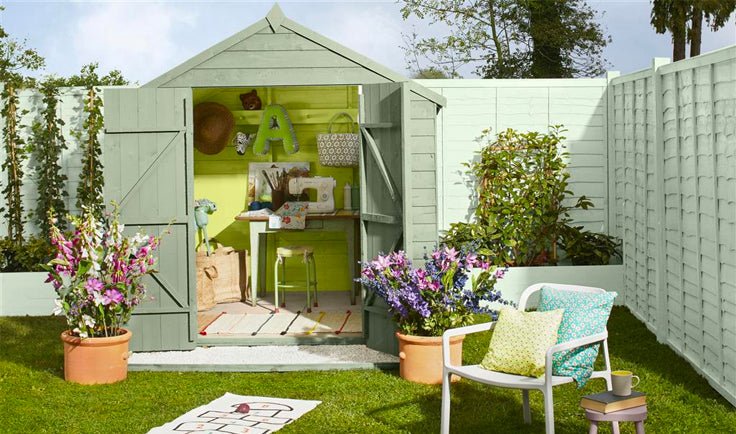Applying wood preservers is a fundamental step you can take that will protect exterior wood from damage, degradation, and disintegration.
Why should you use wood preservers?
As an organic material, wood is naturally prone to degrading over time. For wood that is left exposed to the elements, such as garden furniture, sheds, and fences the process of degradation will occur much more rapidly than wood that is under shelter or indoors.
The frustratingly changeable nature of Britain’s weather ensures that exterior wood is at risk of suffering from a number of damaging processes over short time periods. Water, most commonly in the form of rain, poses a frequent and potentially damaging threat to wood as increased moisture can cause wood to swell, mould, and eventually rot, whilst unprotected wood left in dark damp conditions will turn an unattractive green due to the growth of algae.
Prolonged and intense exposure to the sun’s UV rays also damages wood fibres and can cause planks, beams, and frames to warp and crack. Wood boring insects, such as the dreaded woodworm, also pose a risk to unprotected timber and can rapidly decimate exterior wood. As such, it is absolutely vital to invest in some form of exterior wood protection, lest wood start decaying before your eyes.
Wood preservers offer the most efficient and cost effective means of protecting against all the previously mentioned processes . As little as one application per year can extend the lifespan of your wood dramatically, meaning you can rest easy no matter what nature throws your way.
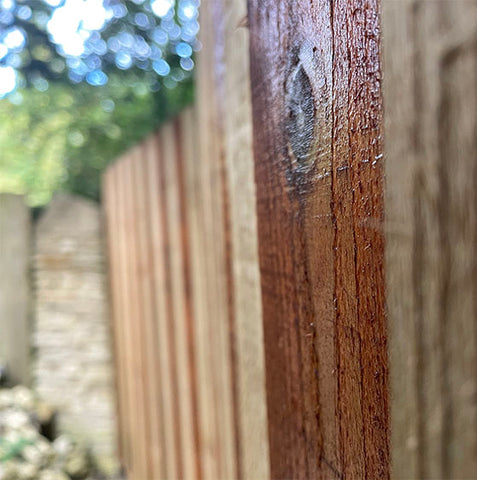
How do wood preservers work?
When applied, preservers stabilise the wood’s moisture levels and protect it from decay by acting as a protective barrier, repelling water and preventing invasive organisms from entering.
How do you use wood preservers?
There are three types of wood preservers: water-based wood preservers, oil-based wood preservers, and solvent-based wood preservers. All these preservers can be applied via two methods; with a suitable brush or an airless paint sprayer.
It is important to note that all types of wood preserver are best applied to raw, bare wood, be it freshly sawn or sanded down. You should use a brush to apply your wood preserver to smaller or more intricate pieces of timber. When applying preservers to larger surfaces such as fences, we recommend using a paint sprayer as this will save you a considerable amount of time.
Which wood preserver is best?
The answer to this question depends on a number of factors, but generally the best wood preservers are solvent-based, such as Barrettine’s Premier Wood Preserver. This is because solvent-based preservers are absorbed deeper into the wood, resulting in stronger and longer lasting protection. However, in certain circumstances - such as when treating wood in poorly ventilated areas - water-based products should be used as they are non-toxic and carry minimal odours.
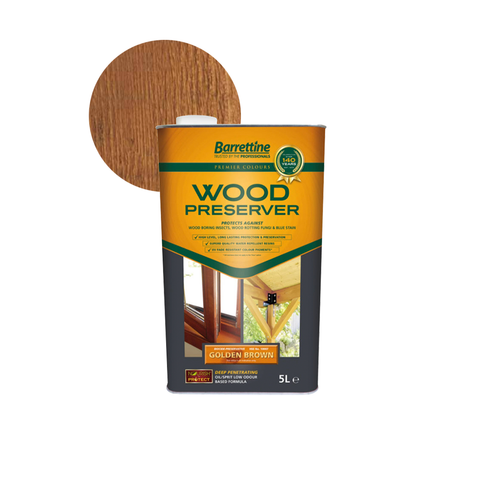
|
Wood Preserver Feature Comparison
|
||||||
|
Name |
Base ingredient |
UV protection |
Rot and insect protection |
VOC |
Pre-treatment compatible |
Interior and exterior |
|
Barrettine Premier Wood Preserver (5L) |
Solvent |
Yes |
Yes |
Very high |
Yes |
Exterior |
|
Barrettine Wood Protective Treatment (5L) |
Solvent |
Yes |
Rot only |
Very high |
Yes |
Exterior |
|
Barrettine Premier Universal Preserver (5L) |
Solvent |
No |
Yes |
Very high |
No |
Both (interior structural timbers) |
|
Cuprinol Shed & Fence Protector (5L) |
Solvent |
Yes |
Yes |
High |
Yes |
Exterior |
|
Everbuild Lumberjack Triple Action Wood Treatment (5L) |
Water |
No |
Yes |
Low |
No |
Both |
|
Barrettine Log Cabin & Complete Decking Treatment (5L) |
Solvent |
Yes |
Rot only |
Very high |
Yes |
Exterior |
|
Liberon Extreme Wood Stain (2.5L) |
Water |
Yes |
Rot only |
Low |
Yes |
Exterior |
|
Liberon Exterior Wood Protector (5L) |
Water |
Yes |
Rot only |
Low |
Yes |
Exterior |
|
Barrettine Creosolve |
Oil |
No |
Yes |
Low |
Yes |
Exterior |
|
Ronseal Ultimate Fence Life |
Water |
Yes |
Rot only |
Low |
Yes |
Exterior |
What is the best time of year to apply wood preservers?
Wood preservers are best absorbed and most easily accepted when wood is warm and dry. The summer months are therefore an ideal time to get outside and commit some time to exterior wood protection.
But as we well know, DIY and restoration does not always adhere to carefully plotted timetables. If you find yourself running out of summer months do not panic; at a stretch wood preserver could be applied up till October. We would not recommend using it any later than this as exterior wood becomes progressively wetter during the autumn and winter months. Applying preserver to wet wood is a futile exercise as both oil-based and solvent-based preservers - due to their oil content - will be rejected, whilst water-based preservers will not be absorbed by the already saturated wood, resulting in unprotected wood and wasted product.
Do you need to apply a wood preserver if using treated wood?
It is advisable to apply preserver to previously treated timber, as this will improve your timbers protection and help prevent cracking. We recommend using solvent-based wood preservers on treated wood as this will benefit all types of timber, regardless of the treatment method that was previously used.
Is wood preserver bad for the environment?
As mentioned previously, water-based wood preservers are non-toxic. As such, they contain low levels of volatile organic compounds (VOCs). This would lead us to suggest water-based preservers if minimising environmental impact is your number one priority. Solvent-based preservers generally have higher VOC counts but as with water-based preservers, these will evaporate rapidly on application and safely disperse in well-ventilated areas, meaning environmental impact should be minimal.
How often is it recommended to reapply wood preserver?
Applying an annual top up coat is the optimal means of protecting your exterior wood, but if that to-do list is looking extra long this summer, don’t sweat it. Wood preservers can be left for two years before being reapplied. However, leave it any longer than this and you risk irreversible damage occurring to your exterior wood.
|
Wood Preserver Coverage Comparison |
|||||
|
Name |
Coats required |
Coverage |
Drying time |
Price per litre |
Estimated price per sq.m (per coat) |
|
Barrettine Premier Wood Preserver (5L) |
2-3 |
5-6m2/L |
6-12 hours |
£6.79 |
£1.13 - £1.36 |
|
Barrettine Wood Protective Treatment (5L) |
2 |
6m2/L |
24-48 hours |
£4.59 |
£0.77 |
|
Barrettine Premier Universal Preserver (5L) |
2-3 |
6.25m2/L |
24 hours |
£7.51 |
£1.20 |
|
Cuprinol Shed & Fence Protector (5L) |
2-3 |
15m2/L |
48+ hours |
£5.19 |
£0.35 |
|
Everbuild Lumberjack Triple Action Wood Treatment (5L) |
2 |
3-4m2/L |
Under 1 hour |
£6.29 |
£1.57 - £2.10 |
|
Barrettine Log Cabin & Complete Decking Treatment (5L) |
1-2 |
5-8m2/L |
48-72 hours |
£8.65 |
£1.08 - £1.73 |
|
Liberon Extreme Wood Stain (2.5L) |
2-3 |
12m2/L |
24 hours |
£13.14 |
£1.10 |
|
Liberon Exterior Wood Protector (5L) |
2 |
12m2/L |
24 hours |
£12.01 |
£1.00 |
|
Barrettine Creosolve |
2 |
6-8m2/L |
24-48 hours |
£3.09 |
£0.39 - £0.52 |
|
Ronseal Ultimate Fence Life |
2 |
6-8m2/L |
24 hours |
£2.59 |
£0.32 - £0.43 |
What if I want my timber to be both grey and protected?
The aesthetic of weathered, grey timber is pleasingly rustic and growing in popularity. But all too often having pleasantly weathered timber comes at the cost of leaving your wood unprotected. Wood left in this manner is vulnerable and will begin to deteriorate rapidly.
Fortunately, the use of clear wood preservers - such as Liberon Exterior Wood Protector and Barrettine’s Premier Universal Preserver - means you can protect your timber without ruining its delicate, grey colour. These wood preservers are completely transparent and result in no yellowing, making them ideal candidates for those wishing to maintain a weathered image whilst also protecting the wood's structural integrity.
Can I apply a wood preserver to all exterior wood surfaces?
In short, yes. Restorate’s extensive collection of wood preservers ensures that you can find the correct product for your project. Whether you need preservers for garden furniture and window frames, or ones suited to larger items like doors, fences, or carports, we have the right product for you.
Can I use a wood preserver inside my shed or cabin?
The majority of preservers are suitable for use inside wooden sheds or log cabins provided that these areas are well ventilated. You must not apply solvent-based wood preservers - or dry coated items - in poorly ventilated areas, as the high VOC count will present a danger to human and environmental health. For these very same reasons solvent-based wood preservers are not suitable for use on wood inside your house.
If your shed or log cabin is weathered we advise sanding the old wood down, or failing this scrubbing it clean. Utilising products such as Barrettine Wood Reviver at this stage will ensure aged, weathered wood regains its original colour and that any stubborn stains are removed. Sanding and/or cleaning your wood is a vital step to undertake before using wood preserver on weathered wood, as it maximises the wood's ability to absorb the preserver resulting in thorough and longer lasting protection.
Are wood preservers pet, garden, and child safe?
Once dry all wood preservers are safe. However, when applying the wood preserver, and throughout the drying process, it is best to keep all children and pets away from the treated area. This is because drying wood preservers still contain VOCs which can be harmful. For this reason we also advise careful application around plant life, as these compounds could damage them and the surrounding environment. If you will struggle to avoid plants when using a paint sprayer, please apply the wood preserver with a brush to avoid contamination.
Can I apply wood preservers over a previously finished piece of wood?
Wood preserver should not be applied directly onto finished timber as it will not be effectively absorbed. Furthermore, the coat of preserver may affect the colour and finish of your wood. If you wish to protect a piece of previously finished wood, you should strip it back before applying the preserver. Once the preserver is dry you can varnish, paint, or finish it in whatever manner suits you.
What is the best clear wood preserver?
One of our most popular clear wood preservers is Barrettine’s Universal Wood Preserver. This product is a low odour, solvent-based preserver that is deeply absorbed into wood, providing long lasting protection from fungi, decay, rot, and infestation, without altering the colour of your timber.
Do preservers or exterior paints need a primer?
Primers are absolutely necessary if the purchased timber has not been pre-treated. However, even pre-treated timber is vulnerable after a six to twelve month period. As such, it is always wise to use primers such as Barrettine Universal Preserver Primer, as it will not only protect untreated wood, but enhance pre-treated woods protection by preventing wet rot, algae and woodworm infestations. This specific primer also contains quality primer resins that provide more adhesion for paints, preservatives or varnishes.
What is the best wood preserver for log cabins?
At Restorate we recommend Barrettine’s Log Cabin & Complete Decking Treatment for use on log cabins as it contains a surface biocide to protect against mould and fungi. Furthermore, the inclusion of wax and other water repellent resins in this specific preserver means that the timber will not require a topcoat of varnish or paint to become water resistant.
What is the best wood preserver for treating woodworm?
Many wood preservers have a preventative biocide formula but none are as effective at treating woodworm as the Everbuild Triple Action wood treatment. This product preserves the wood comparably to the Barrettine Preservers but uses micro fine active technology that penetrates deep into the wood, killing any woodworm or dormant larvae that many other preservers would be unable to reach.




